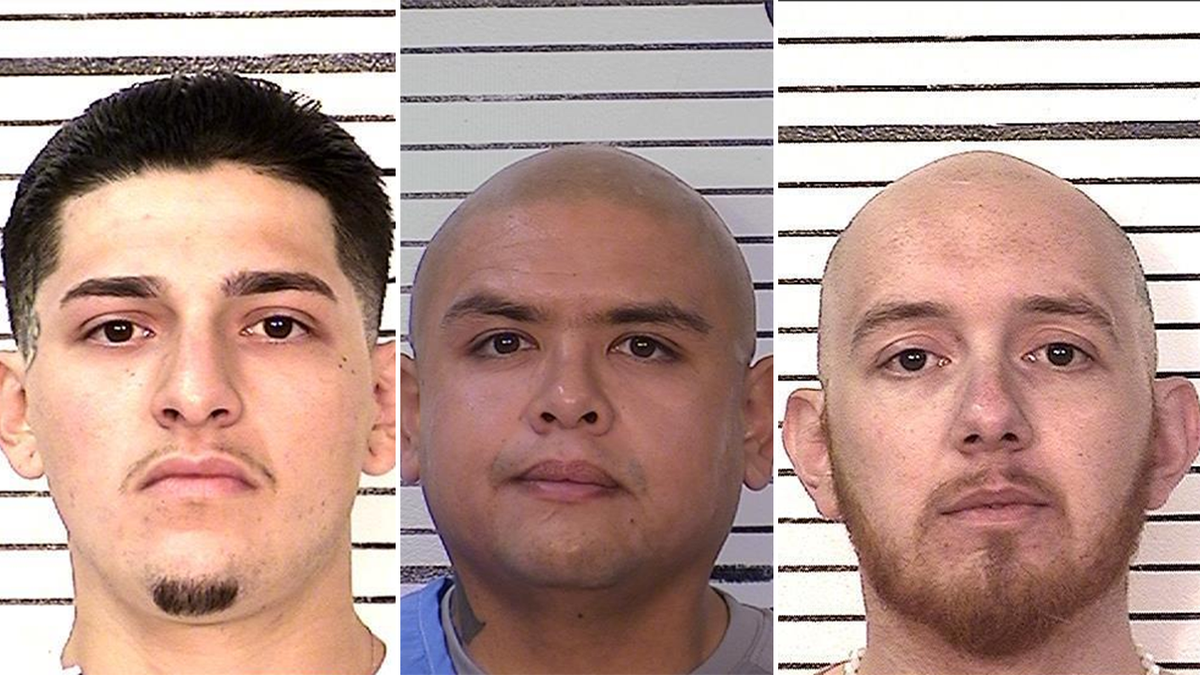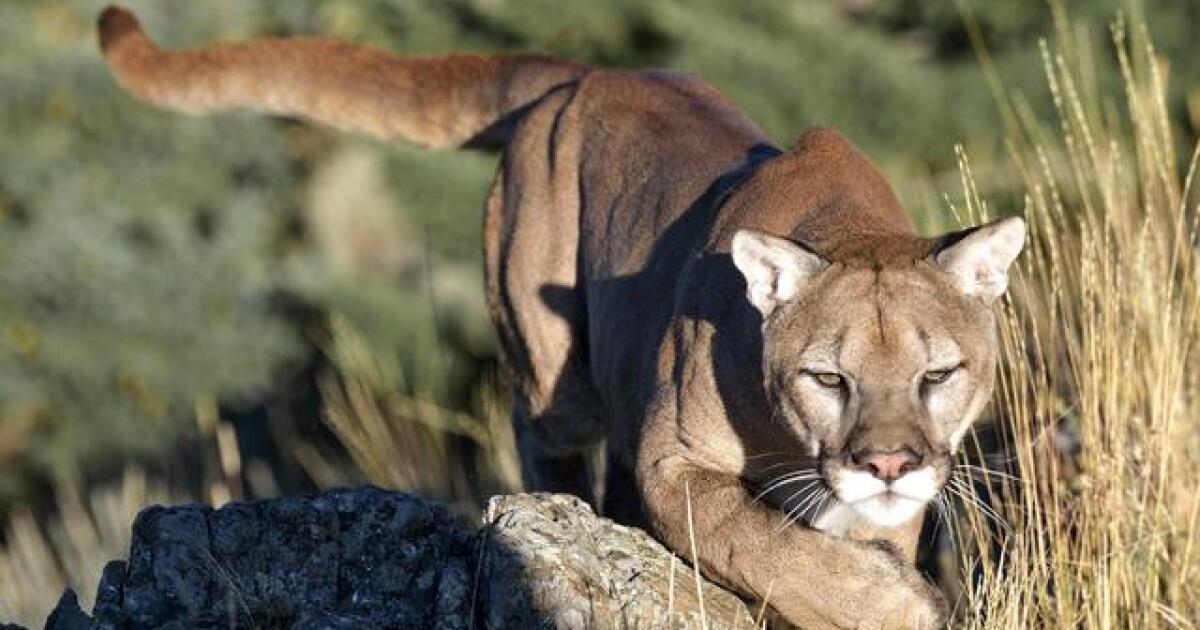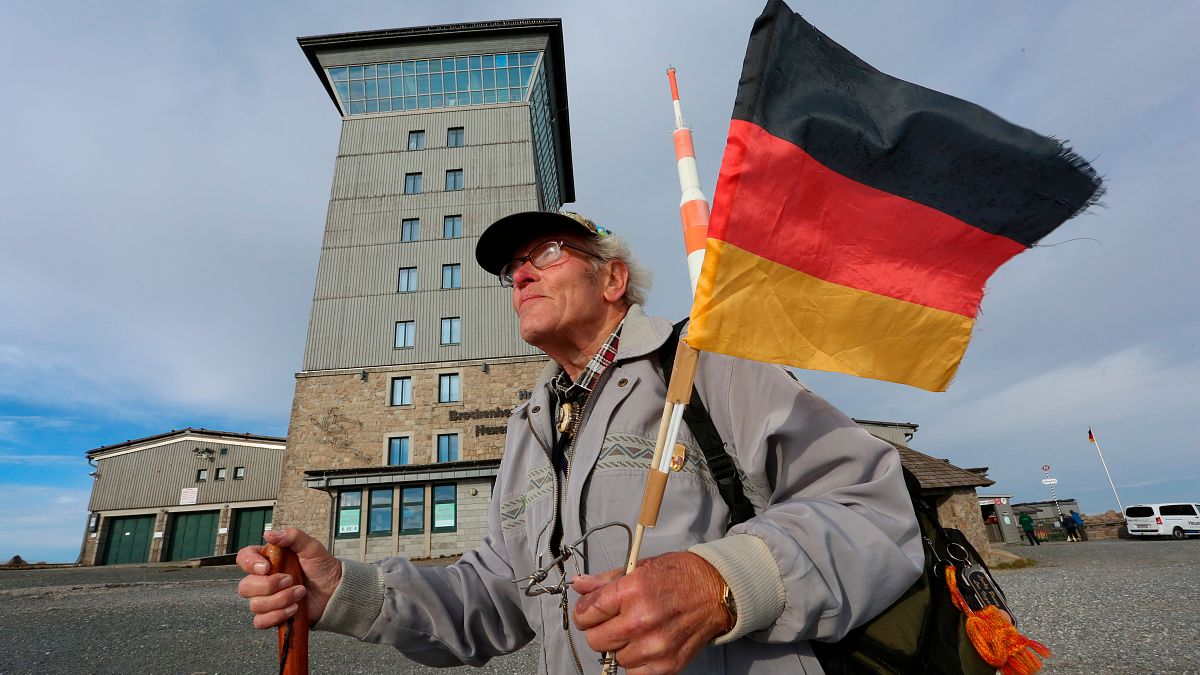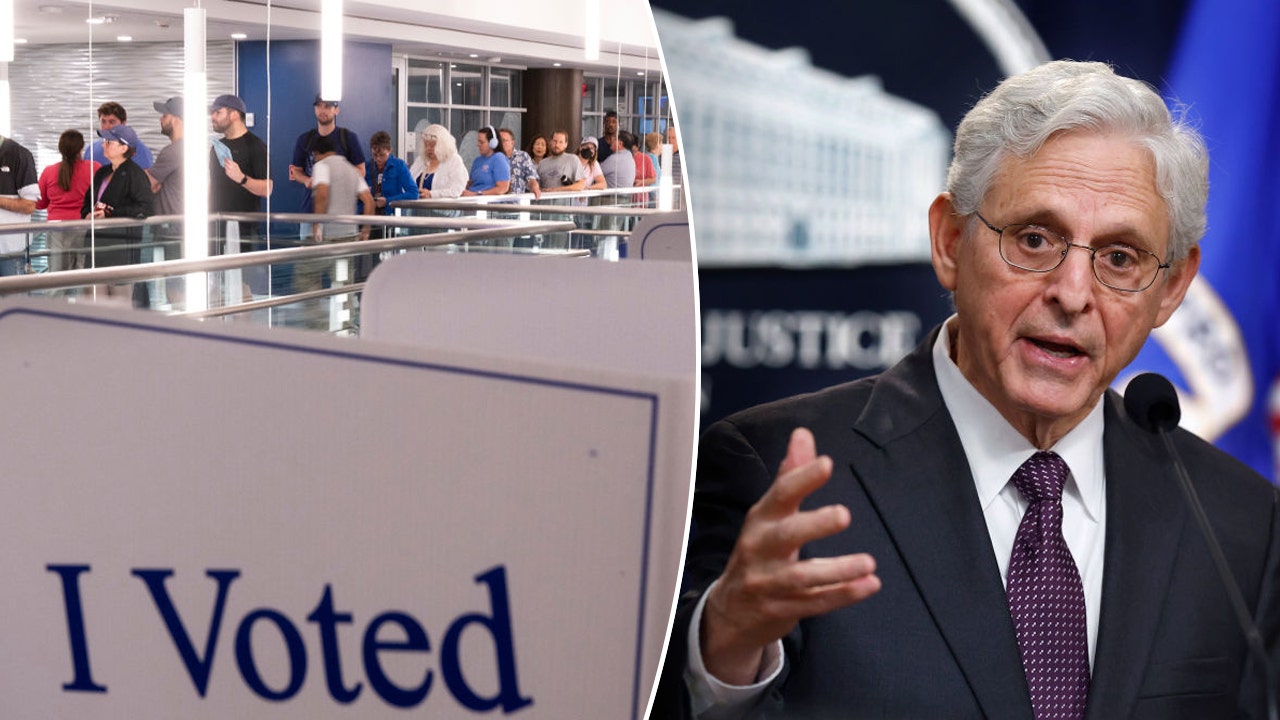West
California mafia member on death row fatally beaten by other inmates in prison

A death row inmate was beaten to death by three other inmates at a prison in Southern California, according to officials.
Alberto Martinez was killed in the Calipatria State Prison in Imperial County on Thursday, the California Department of Corrections and Rehabilitation said in a news release. His death is being investigated as a homicide.
Another inmate, Tyler A. Lua, was observed by prison staff striking Martinez and knocking him to the ground before he continued to hit him. Lue eventually stepped away from Martinez, but two other inmates — Jorge D. Negrete-Larios and Luis J. Beltran — began striking Martinez as he laid motionless on the ground.
Staff then stopped the beating using pepper spray and a baton strike. Two incarcerated-manufactured weapons were found at the scene.
CALIFORNIA MAN ACCUSED OF THROWING BOMB IN COURTHOUSE SAID GOVERNMENT TOOK HIS FIREARMS AWAY: DOJ
Alberto Martinez was beaten to death by three other inmates at a prison in California. (California Department of Corrections and Rehabilitation)
Martinez sustained injuries consistent with an incarcerated-manufactured weapon. No staff or other inmates were injured.
Emergency responders were called to the scene and medical staff performed life-saving measures on Martinez. He was transported to the prison’s treatment area and was pronounced dead at 2:20 p.m.
Movement has been limited in the yard where the alleged attack happened.
Lua, Negrete-Larios and Beltran were moved to restricted housing pending an investigation into the incident.
Martinez, 46, was most recently received from Orange County on Aug. 17, 2010, and placed on condemned status for first-degree murder. He was also sentenced to life with the possibility of parole for attempted first-degree murder with an enhancement for street gang activity and two years for street gang activity, a sentence that was to be served concurrently with the condemned sentence.
CALIFORNIA OWNER OF SQUATTER-INFESTED HOLLYWOOD HILLS MANSION APOLOGIZES, OFFER TO REPAY TAXPAYER FUNDS

Tyler A. Lua, Jorge D. Negrete-Larios and Luis J. Beltran are accused of killing Alberto Martinez. (California Department of Corrections and Rehabilitation)
He acted as the getaway driver in a botched plot to kidnap and murder a businessman, according to the Orange County Register. The plot was reportedly orchestrated by the businessman’s sister.
According to the Los Angeles Times, Martinez was a powerful member of a Mexican mafia who orchestrated murders while on death row and communicated with a woman from Mexico using a cellphone he was prohibited from having.
Lua, 25, was received from San Bernardino County on Jan. 31, 2019, and sentenced to 19 years in prison for attempted second-degree murder with an enhancement for use of a firearm. During his incarceration, he was sentenced to two additional years for having a controlled substance in prison.
Negrete-Larios, 33, was received from Riverside County on July 5, 2016, and sentenced to 32 years and four months in prison for attempted second-degree murder with enhancements for inflicting great bodily injury, discharge of a firearm and street gang activity in commission of a violent felony.
Beltran, 31, was received from Los Angeles County on April 6, 2023, and sentenced to life in prison without parole for first-degree murder with enhancements for intentional discharge of a firearm causing great bodily injury or death and possession of a firearm as a felon.

No staff or other inmates were injured. (iStock)
There are a total of 623 inmates with condemned sentences in California prisons, according to the state’s Department of Corrections and Rehabilitation.
In 2019, California Gov. Gavin Newsom, a Democrat, signed an executive order that instituted a moratorium on the death penalty in the Golden State. The order also called for the repeal of the state’s lethal injection protocol and the immediate closing of the state’s execution chamber at San Quentin State Prison.
The last execution in California was carried out in 2006.
Read the full article from Here

Washington
Unpacking Tacoma's zoning changes, Washington's middle housing push – Northwest Public Broadcasting

By Phineas Pope and Lauren Gallup
Phineas Pope: “For years, the majority of Tacoma was reserved for single family housing development. But the city, as well as the state of Washington, is moving away from that. NWPB’s Lauren Gallup has been reporting on this, and she joins me now to discuss. Hey, Lauren!”
Lauren Gallup: “Hi Phineas, how are you?”
Pope: “I’m good. So let’s start with House Bill 1110. Can you explain some of the key provisions of this bill?”
Gallup: “This is a bill that passed last year in the 2023 legislative session. Put really simply, what it does is allow for more housing development and then more housing types in neighborhoods that traditionally would only have allowed for single family housing. Cities of 25,000 to 75,000 people — so some of our like more midsized to smaller cities — have to allow for development of at least two units per lot on all lots zoned predominantly for residential use. So essentially, what that does is say, as a state, all of our cities, we’re moving away from single family zoning.
As the size of the city increases, the number of units allowed per lot increases. There are also more units allowed when the neighborhood is within a certain distance of major transit, and when there are some units reserved for affordable housing.”
Pope: “How does House Bill 1110, then, aim to address the housing crisis in cities like Tacoma?”
Gallup: “It’s really looking to address what we’re calling middle housing. So these are places that are achievable for people with more of a moderate income. Maybe they’re, you know, area median income, they’re hovering right around there. They are not affordable housing. There are provisions to create affordable housing, but that is not the main aim of this bill. So if neighborhoods allow more housing types, like duplexes, for example, the idea is that those are going to be less expensive, more affordable, maybe, you know, as a starter home or for someone to rent while they’re saving up to buy a bigger space.”
Pope: “You’ve attended some City Council meetings in the course of your reporting. What’s been the public’s reaction to all of this?”
Gallup: “The city council held this public hearing to talk about Home in Tacoma phase two, these zoning changes they’re considering. A lot of people showed up, and a lot of people have a wide range of opinions. There’s some that are opposed, there’s some that are in favor of it. But even amongst those two camps, people feel really differently.”
Pope: “I want to talk about one of the pictures you took of a yard sign. It said, ‘save our homes and tree canopy.’ Can you talk about the environmental impacts tied to rezoning for middle housing?”
Gallup: “So, when I spoke with Lowell Wyse, who’s the executive director of the Tacoma Tree Foundation, he feels really strongly, actually, that the provisions that are included in this phase, phase two, actually really help ensure protection for existing trees, create more tree canopy and green space when we’re developing.”
Lowell Wyse: “Sometimes it comes down to housing versus trees, but we think that that’s a false choice.”
Gallup: “I think people are rightfully worried that more housing development could lead to loss of these green spaces and tree canopy. We have definitely seen that in Tacoma. We have the lowest level of tree canopy in the Puget Sound. But I will say that a lot of people are happy with what is being proposed regarding to this, because it’s the first time that in Tacoma, there would be regulation of existing trees on private property.”
Pope: “All right, last question for you, Lauren. Are there any upcoming policy decisions or votes related to rezoning in Tacoma that residents should be aware of?”
Gallup: “Yes. So, the City Council is going to vote on these proposals in mid-November. That’s what’s scheduled, always subject to change. Over this month and into the beginning of November, city council members will get opportunities — they’re called study sessions — to look over what’s being proposed and, you know, do their homework before they make a vote. There was a lot of opportunity for public input. But of course, you’re always welcome to reach out to city council members in the planning commission and reporters like me, you know, to ask questions and just understand what’s going on in your local government.”
Pope: “NWPB’s Lauren Gallup has been reporting from Tacoma. Lauren, thanks so much!”
Gallup: “Thanks, Phineas!”
Wyoming
Guides face federal charges for allegedly leading illegal mountain lion hunts in Idaho, Wyoming

Three wildlife guides are facing possible prison time and fines up to a quarter of a million dollars, after they allegedly ran an illegal hunting enterprise that resulted in the deaths of at least a dozen mountain lions, federal prosecutors said Wednesday.
In a 13-count indictment returned at the end of August, a federal grand jury charged Michael Kulow, 44, Andrea May Major, 44, and LaVoy Linton Eborn, 47, with conspiracy to violate a federal act banning illegal trafficking of wildlife and multiple violations of the act itself, according to the U.S. Attorney’s Office in Idaho. The guides are all from Idaho.
The charges stemmed from the trio’s alleged exploits between December 2021 and February 2022. They are accused of working illegally as big game outfitters and guides in the Caribou-Targhee National Forest and the Bridger-Teton National Forest, U.S. Attorney Josh Hurwit said, citing the indictment. The national forests are located in southeastern Idaho and western Wyoming, respectively.
Kulow, Major and Eborn were employed in Idaho by a licensed outfitter — a company that provides various services to hunters, including guiding — when they began to independently book and accept payments from hunting clients at the end of 2021, the U.S. attorney said. The three of them allegedly guided those clients through illegal hunts for mountain lions, leading to the killings of at least 11 of the animals in Idaho, and one more Wyoming. The mountain lion killed in Wyoming was a cougar recorded by the Boone and Crockett Club.
The trio is also accused of falsifying portions of their big game mortality reports, which Idaho requires them to submit to the state’s fish and game department, after those illegal hunts. At least three of the poached mountain lions were shipped to Texas without proper documentation, officials said, and all the animals were transported from protected land to or from Idaho, Utah, Wyoming, Montana, Alaska, Texas and North Carolina. Each of those transports would violate Idaho state laws as well as federal laws under the Lacey Act.
The Lacey Act prohibits illegal trafficking of wildlife and plants, and regulates how both are traded or moved between states or into the country. Under the terms of the act, it is against federal law “to import, export, transport, sell, receive, acquire, or purchase in interstate or foreign commerce any plant, with some limited exceptions, taken or traded in violation of the laws of the United States, U.S. State or a foreign country,” according to Customs and Border Protection.
Amendments to the law in recent decades extended its provisions to bar trafficking of plants or animal products that were illegally harvested, as well as products without a certain kind of declaration, the Animal and Plant Health Inspection Service says.
Kulo and Major were arrested Sept. 24 and booked with the U.S. Marshals Service in Boise, according to Hurtwit’s office. Eborn was taken into custody the following day and booked with the Marshals Service in Pocatello. Each pleaded not guilty during initial appearances before U.S. Magistrate Judge Debora K. Grasham in Idaho district court.
Their jury trial is scheduled to begin Nov. 18 in federal court in Pocatello.
The charges were announced the same week than an 81-year-old Montana man was sentenced to six months in federal prison for violating the Lacey Act. Arthur “Jack” Schubarth was accused of illegally using tissue and testicles from large sheep hunted in Central Asia and the U.S. to create hybrid sheep for captive trophy hunting in Texas and Minnesota.
San Francisco, CA
San Francisco Giants Don’t Have Much to Figure Out With This Year’s Arbitration Class

The San Francisco Giants enter the offseason with just four arbitration-eligible players: Mike Yastrzemski, LaMonte Wade Jr., Tyler Rogers, and Camilo Doval. New President of Baseball Operations Buster Posey may opt to retain all four as he looks to build a competitive team under his leadership.
Yastrzemski, a key outfielder for the Giants, provides a strong left-handed bat and valuable defense, while Wade’s versatility at first base and in the outfield has been critical to the team’s success. Both have had strong contributions at the plate and are important for maintaining offensive depth. MLB Trade Rumors projects the duo to receive a combined $14.2M, with $9.5M to Yastrzemski and $4.7M to Wade.
On the pitching side, Rogers, a side-arming reliever, has been a workhorse in the bullpen, offering consistency in both high-leverage and middle-inning roles. His $5.5M award would not be an overpay for his veteran stability.
Doval, the team’s former closer that was briefly demoted to the minors down the stretch, is the biggest question mark of this class. His projection is just $4.6M, a significant increase from his $770k pre-arb salary, but significantly less than a closer with 92 career saves would be expected to receive. The Giants optioned him down to Triple-A in mid-August after a 4.70 ERA, only to see the flamethrower put up a 5.40 after he returned.
In a fortunate bit of “disaster-averted news”, Doval reportedly turned down a $50M multi-year extension offer over the summer, setting his sights on the Edwin Díaz $102M deal that the closer signed with the New York Mets.
Posey will have to navigate the arbitration process carefully, but keeping these core contributors would allow the Giants to maintain a strong foundation for 2025. With all four players being critical to the Giants’ lineup and bullpen stability, retaining them through arbitration makes sense as Posey builds the next phase of the team’s competitive window.
-

 News1 week ago
News1 week agoElection 2024 Polls: Texas
-

 Politics1 week ago
Politics1 week agoNew poll indicates whether Harris or Trump is making gains with younger voters
-

 News1 week ago
News1 week agoVideo: Where Trump and Harris Stand on Democracy
-

 World1 week ago
World1 week agoPhotos: The aftermath of a deadly Israeli attack on southern Beirut
-

 Politics1 week ago
Politics1 week agoHarris calls for eliminating filibuster to pass 'Roe' abortion bill into federal law
-

 News1 week ago
News1 week agoRetired NFL Hall of Fame quarterback Brett Favre reveals he has Parkinson's disease
-

 Business1 week ago
Business1 week agoVideo: The U.S. Is Mining for Uranium
-

 Politics1 week ago
Politics1 week agoFLASHBACK: VP Harris pushed for illegal immigrant to practice law in California over Obama admin's objections












